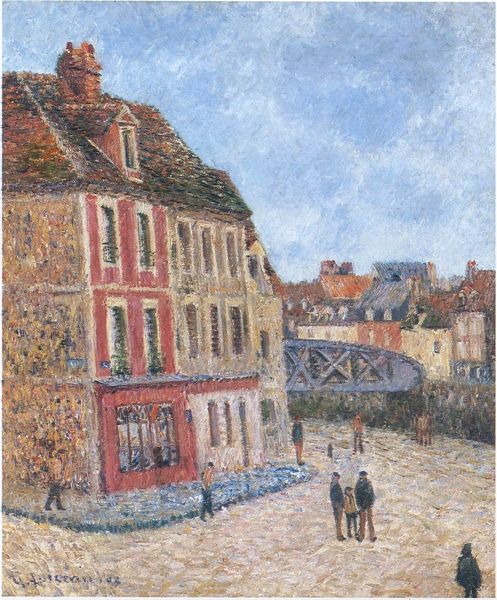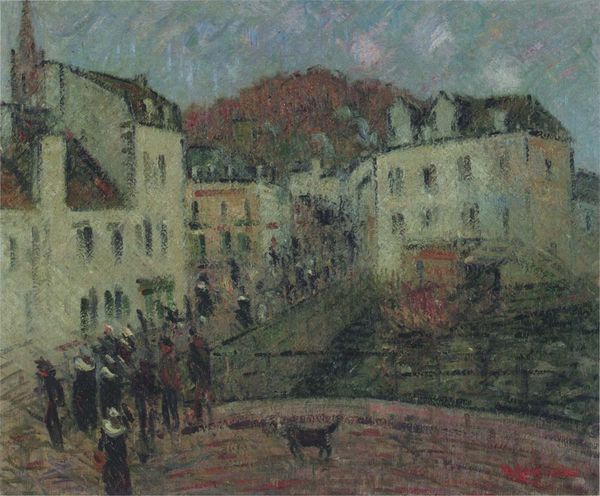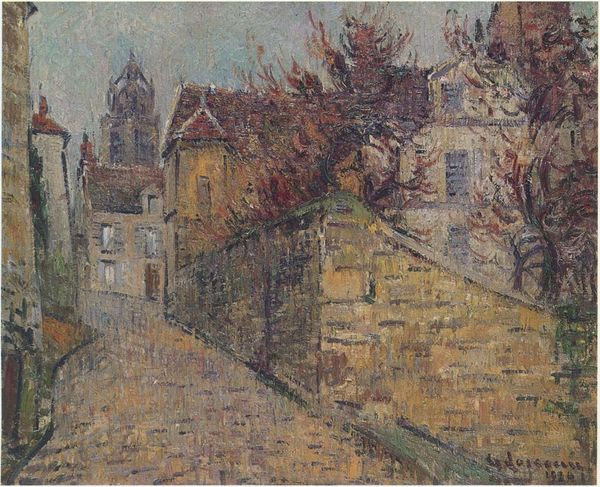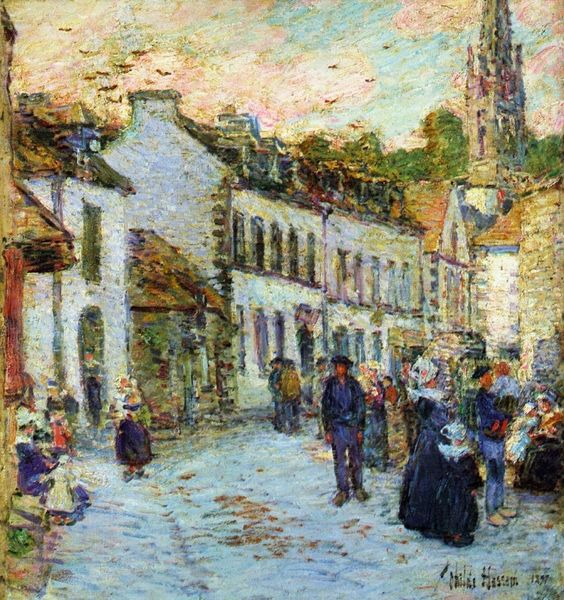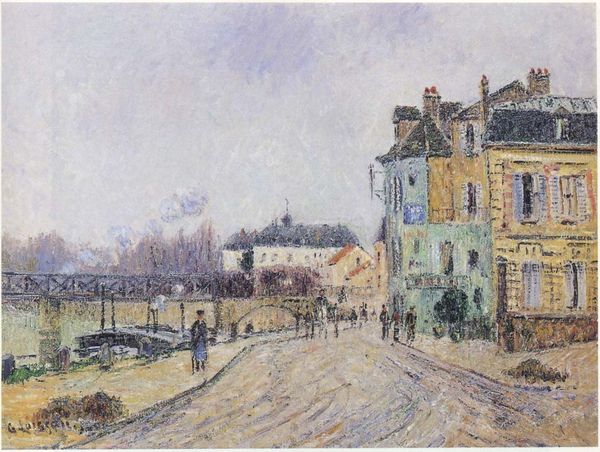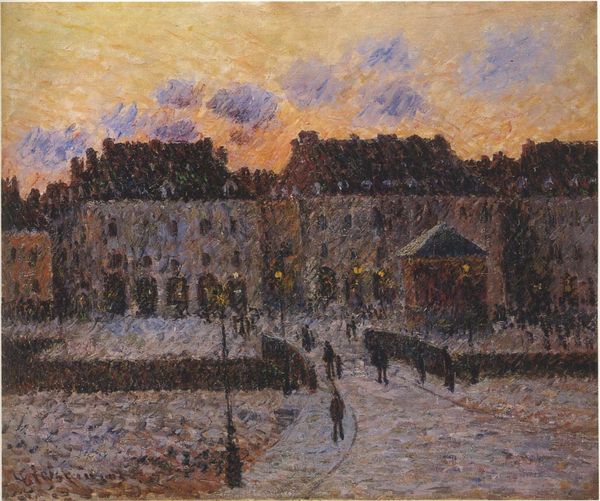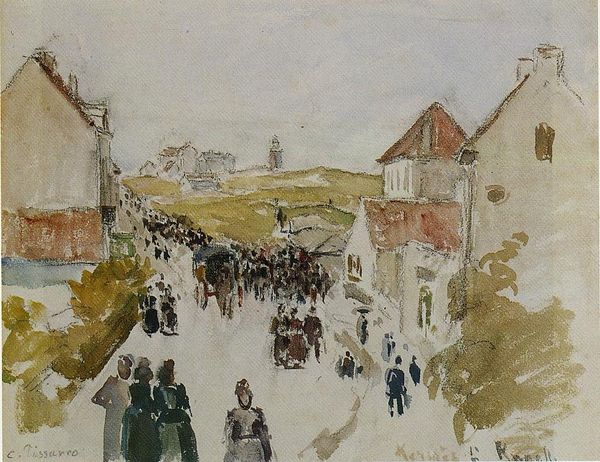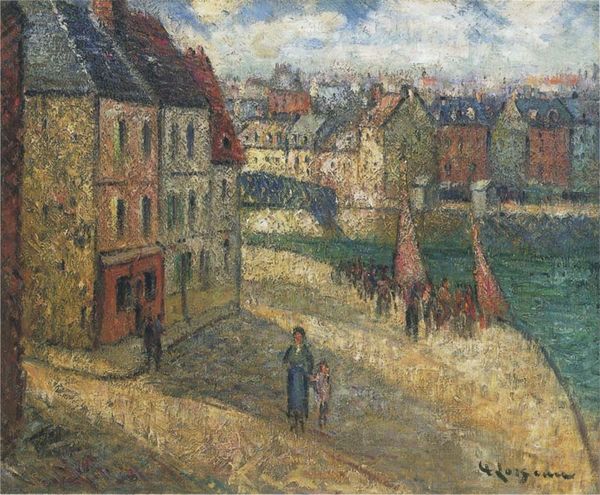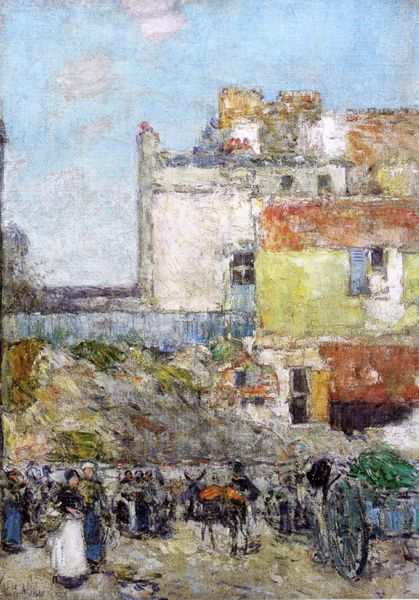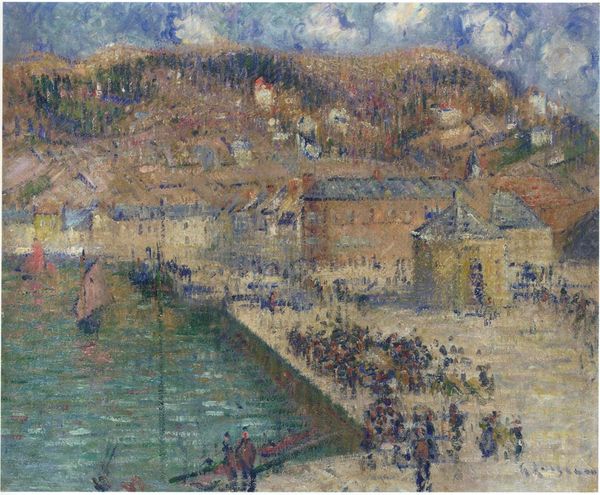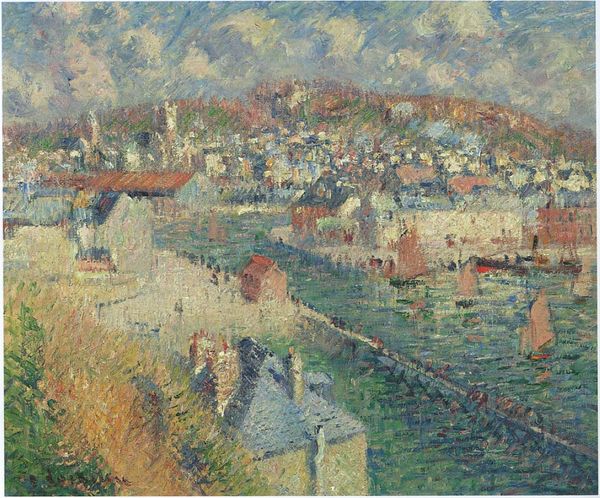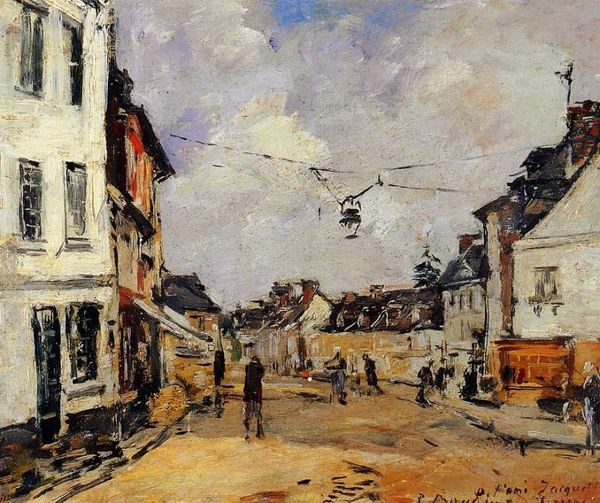
plein-air, oil-paint, impasto
#
impressionism
#
impressionist painting style
#
plein-air
#
oil-paint
#
landscape
#
impressionist landscape
#
handmade artwork painting
#
impasto
#
cityscape
#
genre-painting
#
post-impressionism
#
street
Copyright: Public domain
Curator: Welcome. We are looking at "Pont Aven" by Gustave Loiseau, an oil on canvas piece. Its impasto and plein-air execution really catch the eye. What’s your immediate impression? Editor: Overwhelming whiteness, honestly. It seems to portray the lingering gaze of the colonial project over this community, doesn't it? It mutes what should be the vibrant hustle-and-bustle of a French town, especially along that central thoroughfare. Curator: That's a valid interpretation, though perhaps one could argue that Loiseau is emphasizing light, which dominates the composition, fracturing off surfaces and muting them by blending them. It almost becomes more of an atmospheric study than a socio-political statement, doesn't it? Editor: Perhaps. But Impressionism—and here, Post-Impressionism—wasn't created in a vacuum. These streets were walked by people living complex lives under complex power structures, from capitalism to class divisions and colonialism. Are there people of color reflected within this image? If not, who gets to be included in "French society"? Who benefits from the town, the road, and everything that represents here? Curator: That's certainly one reading, but isn't there also a certain artistry to Loiseau's brushwork? The way he uses thick dabs of paint to capture the texture of buildings, the light shimmering on the cobblestones. One can look and just be amazed by its tactile qualities, can’t you say? It also feels more genuine due to being produced en plein-air, and such an authentic expression would hardly require artifice for the sake of conveying ideology. Editor: That tactility has political implications, you know. The way it creates the idea of a fixed reality while actively, and possibly willfully, ignoring other potential elements is not exactly innocent. It also centers painting, its traditions, and its expectations over this social narrative you keep alluding to! Curator: A worthwhile reminder that what appears neutral often isn't. Despite being produced perhaps simply as a result of the artist finding inspiration on the scene, it's hard not to feel a tinge of such weight when thinking of it today. Editor: Precisely. Art can be visually appealing, but its meanings resonate and accumulate with time, context, and who is looking at it.
Comments
No comments
Be the first to comment and join the conversation on the ultimate creative platform.

